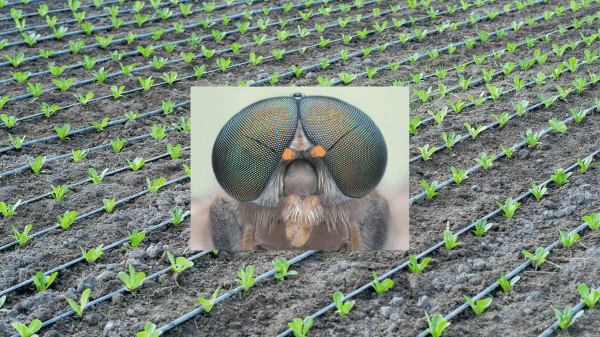One of the most confusing things about present-day dilemmas is that each solution to a problem leads to a different set of problems. Particularly when it comes to technology.
Take that familiar addition to our daily lives: the LED bulb. It has been hailed for its capacity to generate far more light with less power than the old incandescent bulbs. So that’s a good thing, right?

Up to a point. It’s so efficient that major cities including New York, Paris, and Shanghai have adopted LED streetlights. Yet over the last decade, they have become a major source of light pollution—so if you live in a big city, good luck seeing any stars when you look up into the night sky.
I thought of this after a recent phone conversation with John Pandol, director of special projects for Pandol Bros. Inc. BB #:111977, the table grape giant. We were discussing the ever-present water problem in Pandol’s home state of California.
As John pointed out, open-field irrigation has become an endangered species, at any rate in permanent crops. “It’s almost all drip,” John observes. That is certainly the case in any orchard or vineyard that is newer than 25 years old—which is to say practically all of them.
“It’s very unusual to see a non-drip permanent crop,” he adds.
With drip, John adds, vine crops require some 3 ½ to 4 acre-feet per season; tree crops 4 ½ to 5 acre-feet. By contrast, cotton in California’s San Joaquin Valley (itself something of an endangered species) required 7 acre-feet per season with open-field irrigation.
So drip is a good thing, right? In most respects. But as John pointed out, it has had one not so good side effect.
As is well known, groundwater depletion is a serious problem in California: efforts to stem it have taken between 500,000 and 1 million acres out of agricultural production in the state over the past three years, he points out.
Curiously, drip irrigation increases the groundwater problem—precisely because of its efficiency. Most of the water goes directly to the crop, so very little percolates down the ground. With open-field irrigation, John says, some 20 percent of water applied would make its way down to groundwater.
Nobody is going to return to open-field irrigation just to recharge groundwater: with staggering water prices—a cost of $2,000 per vineyard acre last year, a more normal $400 this year, according to John—it would hardly pay.
The point is not that drip irrigation is bad. Rather it is that every solution to a problem seems to give rise to a new problem of its own. This seems to be especially true when technology is involved.
Again, no one with any sense would argue that we ought to go back to the agricultural practices of 100 years ago. But we humans tend to see both problems and solutions with single vision, corresponding to our eyesight. Yet many problems today, in ag and elsewhere, might be more accurately seen with the multifaceted eye of a fly.



